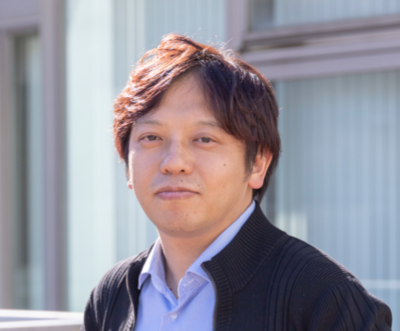Share this
Young Faculty / 025
Associate Professor Toshihiro Okamoto, Takeya laboratory, Department of Applied Chemistry

<About the Research>
Organic semiconductors (OSCs), which are molecular-based materials exhibiting semiconductor properties, are expected to be key materials in printed and flexible electronics that can be fabricated into large-area devices via inexpensive and solution-processable techniques at low temperature (near room temperature). OSCs have several advantages, such as thinness, lightness, and flexibility. In recent years, printable p-type organic semiconductors having carrier mobility (hereinafter referred to as mobility), which is one of the indicators of semiconductor characteristics, exceed 10 cm 2 / Vs (1-7). The research and development of actual devices such as radio frequency identification (RF-ID) tags and sensors using OSCs are rapidly advancing. Furthermore, from the point of view of physics studies, recently, OSCs having high mobility reported band conduction by free electronic behavior charges (8-12) regardless of whether they are low molecular weight semiconductors (hereinafter abbreviated as small-molecule-type semiconductors) or high molecular weight semiconductors (hereinafter abbreviated as polymer semiconductors), which exhibit the same behavior as inorganic semiconductors. On the other hand, when driving a terminal related to the Internet of Things (IoT), it is beneficial to convert the dissipated energy into easy-to-use power. This so-called “harvesting technology” has received a great deal of attention. Research in thermoelectric OSC materials that convert thermal energy into electric power is being conducted.
With this background, our target research is to produce applicable materials, that is, practical OSCs, having 1) high mobility, 2) high chemical and thermal stability, 3) solution processability and 4) heat, environment, and resistance to bias stress in devices, based on conceptually-new p-type and n-type OSC molecules. To achieve these goals, our research strategies are cross-field styles as follows; 1) "molecular design technology" based on structural organic chemistry, 2) "synthetic chemical technology" based on synthetic organic chemistry, 3) "aggregate structure control technology" obtained through thorough X-ray structural analysis. In addition, we will develop complementary research from chemistry, engineering, physics, etc., such as “printing process technology” and “device structure design” suitable for each material, to further improve the performance of materials and to develop new materials. We are developing processes and even functional devices. It is not difficult to understand that our highly unique series of OSC molecules and device fabrication will not only be key materials, but also key technologies for next-generation electronics, and we will carry out further research and development as soon as possible.
[References]
1) T. Okamoto and J. Takeya et al., Adv. Mater. 25, 6392-6397 (2013). (Inside Front Cover)
2) T. Okamoto and J. Takeya et al., Adv. Mater. 26, 4546-4551 (2014).
3) H. Ishii and T. Okamoto et al., Adv. Sci. 5, 1700317 (2018).
4) K. Takimiya et al., Adv. Mater. 23, 1222–1225 (2011).
5) A. Shishido, H. Matsui and J. Takeya et al., Nat. Commun. 7 (2016) 11156.
6) S. Watanabe and J. Takeya et al., Nat. Phys. 13 (2017) 994.
7) T. Okamoto and J. Takeya et al., Sci. Adv. 4 (2018) eaao5758.
8) J. Takeya et al., Jpn. J. Appl. Phys. 44, L1393–1396 (2005).
9) J. Takeya et al., Phys. Rev. B 81, 161306–1/4 (2010).
10) V. Podzorov et al., Phys. Rev. Lett. 95, 226601 (2005).
11) J. Takeya et al., Phys. Rev. Lett. 98, 196804 (2007).
12) H. Matsui, K. Müllen and J. Takeya et al., Chem. Mater. 28, 420–424 (2016).
Takeya Okamoto laboratory:http://www.organicel.k.u-tokyo.ac.jp/en/
These Related Stories